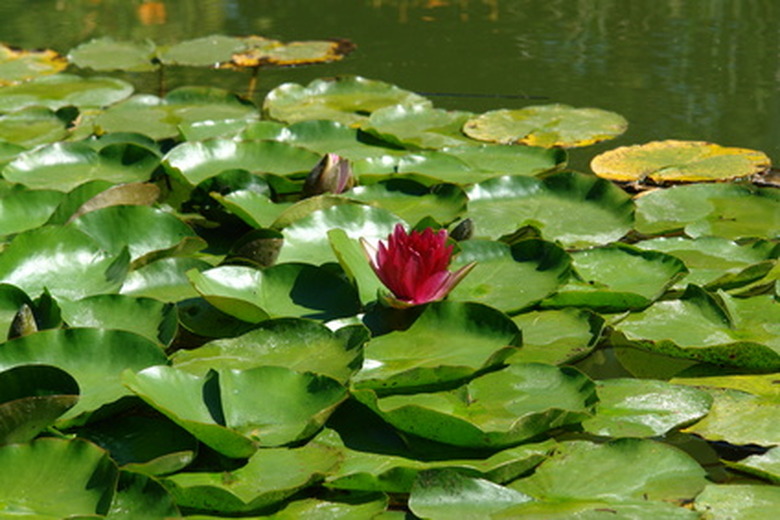How To Transplant Wild Water Lilies
Water lilies grow in still, fresh-water ponds and slow-moving rivers. The underwater roots and tubers attach to the soil at the bottom of the water, and long shoots emerge to create lily pads and flowers on the surface. Water lilies self-propagate by sending out lateral runner roots that expand the area of the plant colony. A new colony is established when floating tubers break off and float away from the parent plant, and the tubers settle on the bottom and form new roots, according to the Royal Botanical Society.
Things Needed
- Knife or pruning shears
- Bucket
- 15-inch pot
- Aquatic potting soil
- Fine gravel
Water lilies grow in still, fresh-water ponds and slow-moving rivers. The underwater roots and tubers attach to the soil at the bottom of the water, and long shoots emerge to create lily pads and flowers on the surface. Water lilies self-propagate by sending out lateral runner roots that expand the area of the plant colony. A new colony is established when floating tubers break off and float away from the parent plant, and the tubers settle on the bottom and form new roots, according to the Royal Botanical Society.
Step 1
Before you can take water lilies from a public or private wild pond, obtain permission from the property owner or the government branch that controls the area.
Step 2
Find a shallow area where the water lilies are growing less than an arm's length from the surface. Grasp a stem from a healthy water lily and follow it down to the bottom of the pond. Feel around and under the root with your fingers.
- Water lilies grow in still, fresh-water ponds and slow-moving rivers.
- The underwater roots and tubers attach to the soil at the bottom of the water, and long shoots emerge to create lily pads and flowers on the surface.
Step 3
Gently loosen the root from the muddy bottom, pulling up slightly. Cut the tuber away from the long, running roots with a knife or pair of sharp shears. Cut all around the tuber cluster until it comes free from the colony and pull it out of the water.
Step 4
Lay the tuberous root system on the bank and cut away any diseased or rotten looking roots. Wrap the roots in a wet towel or put them in a bucket of water to keep them from drying out on their way to your pond.
Step 5
Fill a 15-inch wide pot two-thirds full with aquatic potting soil. Find a section of the tuber that has an "eye," a node that protrudes from the rhizome. Each new stalk and lily pad emerges from one of these eyes. Place the tuber in the pot with the eye facing up. Place whole plants so the stalk and tip of the tuber is just above the soil.
- Gently loosen the root from the muddy bottom, pulling up slightly.
- Cut the tuber away from the long, running roots with a knife or pair of sharp shears.
Step 6
Push the soil back around the root, leaving only the tip of the eye showing above the soil. Put a 1/2 inch layer of fine gravel around the top of the pot to keep the soil in place when you submerge to plant. Leave the tip of the eye free of soil and gravel.
Step 7
Submerge the pots about 12 to 18 inches deep in your pond or water garden. If you are transplanting a plant with a stalk and pad, lower the pot until the pad is resting on the surface of the water. As the stalk lengthens, gradually move the plant to a deeper area of the pond.
